#IoT Devices
Explore tagged Tumblr posts
Text
Lifesaving Tech with Hidden Risks: Medical IoT Devices
Hey, so… what even are Medical IoT Devices?
Okay, let’s start with the basics. Medical IoT (Internet of Things) devices are basically smart gadgets that help doctors and patients manage health in real-time. Think of them as the Fitbits of the medical world, but way more advanced and sometimes implanted inside your body.
Here’s a quick rundown of the most common types:
Wearables: Smartwatches, glucose monitors, patches that track your vitals.
Implantables: Pacemakers, insulin pumps, neurostimulators that keep your heart ticking, your blood sugar in check, your brain functioning properly respectively.
Hospital Gear: Things like infusion pumps, ventilators, or MRI machines that are connected to the hospital’s network.
These devices are amazing because they can send data straight to your doctor, so they can monitor you without you having to camp out in a hospital bed. But (and there’s always a but), this connectivity comes with a price: security risks.
Wait, How Can a Pacemaker Get Hacked?
Okay, so let’s get into the nitty-gritty of how these devices can be exploited. It’s not just about “hackers being hackers”, there are specific technical flaws that make these devices vulnerable.
1. Encryption (or Lack Thereof)
Encryption is like a secret code that scrambles data so only authorized parties can read it. For medical IoT devices, encryption is crucial because they’re transmitting sensitive health data. But here’s the problem: not all devices use strong encryption.
What’s Happening: Some devices send data in plaintext (unencrypted) or use weak encryption algorithms that can be cracked by hackers.
Example: If an insulin pump sends unencrypted data to a doctor’s computer, a hacker could intercept it and alter the dosage instructions, potentially causing harm to the patient.
2. Authentication Protocols
Authentication is how a device verifies that someone (or something) is who they claim to be. Think of it like a password or a fingerprint scan. But many medical IoT devices use weak or default authentication methods.
What’s Happening: Devices might use hardcoded passwords (e.g., “admin” or “1234”) or lack multi-factor authentication (MFA).
Example: A hacker could use a default password to gain access to a hospital’s network of infusion pumps and change their settings, leading to incorrect medication doses.
3. Specific Attack Vectors
Let’s break down how a hacker might exploit a vulnerability in a real-world device, like an insulin pump:
Step 1: Reconnaissance
The hacker scans for vulnerable devices connected to the internet. Many medical IoT devices are discoverable through tools like Shodan, a search engine for connected devices.
Step 2: Exploiting Weak Authentication
The hacker tries default credentials or brute-forces the password to gain access to the insulin pump’s control interface.
Step 3: Intercepting or Altering Data
Once inside, the hacker can intercept data (e.g., blood sugar levels) or send malicious commands (e.g., delivering an incorrect insulin dose).
Step 4: Covering Their Tracks
The hacker might delete logs or use encryption to hide their activity, making it hard for healthcare providers to detect the attack.
This isn’t just theoretical. Researchers have demonstrated these attacks in controlled environments to highlight the risks.
Real-Life Examples That’ll Make You Side-Eye Your Smartwatch
Let’s talk about some real-world incidents that’ll make you go, “Oh no, this is actually happening”:
The St. Jude Medical Hack (2017): Researchers found that certain implantable cardiac devices had vulnerabilities that could let hackers mess with the device’s functionality. Imagine your pacemaker getting hacked and delivering random shocks to your heart. Terrifying, right?
The Hacked Pacemakers (2018): In a chilling demonstration, the FDA confirmed that nearly half a million pacemakers were vulnerable to hacking. Hackers could potentially alter the device’s settings, drain its battery, or even deliver fatal electric shocks. Abbott (the manufacturer) had to issue a firmware update to patch the vulnerability, but not all devices could be updated remotely, leaving some patients at risk.
Ransomware in Hospitals (2020): A ransomware attack on a German hospital disrupted its systems, and a patient who needed urgent care died because the hospital couldn’t operate properly. This wasn’t a direct attack on a medical device, but it shows how vulnerable healthcare systems are.
These aren’t just hypothetical scenarios. They’re happening, and they’re putting lives at risk.
Who’s Behind These Attacks?
Not all hackers are created equal. Here’s who might be targeting medical IoT devices:
Cybercriminals: They’re in it for the money. They might steal patient data to sell on the dark web or lock down hospital systems with ransomware.
Nation-States: Some governments use cyberattacks as a form of espionage or warfare. Targeting medical devices could be a way to destabilize a country or gather intel.
Hacktivists: These are hackers with a cause. They might attack a hospital to make a political statement or expose security flaws.
So… What Can We Do About It?
The good news is that there are ways to protect medical IoT devices. It’s not a lost cause...yet. Here’s what needs to happen:
1. For Manufacturers:
Stop Using Default Passwords: Imagine leaving your front door unlocked with a sign that says, “Welcome, hackers!” That’s what default passwords like “admin” or “1234” do. Manufacturers need to make sure every device has a unique, strong password right out of the box.
Lock Down Data with Strong Encryption: Encryption is like putting your data in a safe. Manufacturers should use the strongest locks available (like AES-256 encryption) to keep patient information safe from prying eyes.
Test for Weak Spots Before Selling Devices: Before releasing a device, manufacturers should hire ethical hackers to try and break into it. This is called penetration testing, and it helps find and fix vulnerabilities before they can be exploited.
Follow the Rules (FDA Guidelines): The FDA has a set of rules for making sure medical devices are secure. Manufacturers need to follow these guidelines to keep patients safe.
2. For Hospitals and Doctors:
Keep Medical Devices on a Separate Network: Think of it like having a VIP section at a concert. Hospitals should keep medical devices on their own secure network, away from the rest of the hospital’s systems. This makes it harder for hackers to sneak in.
Watch for Suspicious Activity: Hospitals should use tools that act like security cameras for their networks. These tools, called intrusion detection systems (IDS), can spot hackers trying to break in and alert the staff.
Train Staff to Spot Cyber Threats: Doctors and nurses are experts at keeping patients healthy, but they might not know much about cybersecurity. Hospitals should train their staff to recognize and respond to cyber threats, like phishing emails or suspicious device behavior.
3. For Patients:
Keep Your Device’s Software Up to Date: Just like you update your phone to get the latest features and security fixes, you should update your medical devices. These updates often include patches for known vulnerabilities.
Avoid Public Wi-Fi: Public Wi-Fi is like shouting your secrets in a crowded room, anyone can listen in. If your medical device connects to the internet, make sure it’s using a secure, private network.
Use a VPN for Extra Security: A VPN is like a secret tunnel for your internet traffic. It keeps your data safe from hackers, especially if you’re accessing medical information remotely.
The Bigger Picture: Why This Matters for Everyone
Okay, so this isn’t just a tech issue. It’s a public health issue. Vulnerable populations, like the elderly, people with chronic illnesses, or those who rely on medical devices to stay alive, are often the most at risk. And let’s be real: it’s not fair that some people are more at risk than others just because of their income or where they live.
Here’s the thing: wealthier patients might have access to the latest, most secure devices or private healthcare, while lower-income patients could be stuck with outdated or less secure options. Imagine needing a pacemaker but only being able to afford one that hasn’t been updated in years and is vulnerable to hacking. That’s not just unfair; it’s dangerous. And it’s something we need to fix as a society.
But it’s not just about money. There’s a bigger ethical responsibility here. Manufacturers need to prioritize patient safety over profits. That means investing in strong encryption, regular updates, and rigorous testing before releasing devices. And governments? They need to step up and enforce stricter cybersecurity standards to hold manufacturers accountable.
And let’s talk about the legal side for a sec. Laws like the FDA’s cybersecurity guidelines and the EU’s Medical Device Regulation are supposed to keep us safe, but they often lag behind the fast pace of tech advancements. Plus, there’s the whole question of liability: if a hacked device harms someone, who’s responsible? The manufacturer? The hospital? The patient? It’s a legal gray area that needs clarity.
Oh, and it’s not just a problem in wealthy countries. In developing nations, where healthcare systems are already stretched thin, a cyberattack on medical devices could be catastrophic. Access to secure healthcare is a basic human right, and we’re failing to protect that right when we ignore these vulnerabilities.
So yeah, this isn’t just about fancy gadgets or tech jargon. It’s about people’s lives. It’s about making sure that everyone, no matter their income or where they live, has access to safe, secure healthcare. And that’s something we all need to care about.
Final Thoughts
Medical IoT devices are a game-changer for healthcare, but their security flaws are a ticking time bomb. We can’t afford to ignore this issue, not when lives are on the line. Whether you’re a patient, a doctor, or just someone who cares about tech and ethics, it’s time to start paying attention.
So, the next time you hear about a smart pacemaker or a glucose-monitoring app, remember: with great tech comes great responsibility.
Further Reading
If you’re as obsessed with this topic as I am, here are some links to dive deeper:
MuddyWater’s Exploitation of Medical Devices (CISA Alert)
FDA Cybersecurity Guidelines for Medical Devices
Shodan: The Search Engine for Connected Devices
European Union Medical Device Regulation (MDR)
TL;DR
Medical IoT devices are amazing but have serious security flaws. Hackers can exploit these flaws to harm patients, and we need better safeguards to prevent this. Everyone (manufacturers, hospitals, and patients) has a role to play in making these devices safer.
2 notes
·
View notes
Text
ifLink: Toshiba’s Open IoT Platform Expands Internationally

Toshiba Group subsidiary brought ifLink, a cutting-edge and affordable IoT development solution, to Thailand. It utilises Toshiba Digital Solutions' ifLink. For this first ifLink firm outside Japan, TATC sells software licenses and provides customer care.
IfLink, an open IoT platform service, makes it easy to connect to a cloud-based application platform, combine IoT devices and web services into modules, and describe device operation using if-then (condition-action) rules. Over 100 Japanese firms and educational institutions have approved it, and Toshiba Digital Solutions has licensed it to several sectors.
Inexperience and high beginning costs have stopped certain Thai manufacturing facilities from embracing IoT. TATC is cooperating with the non-profit Technology Promotion Association (Thailand-Japan) (TPA) to develop human resources and transfer and distribute Japan's latest IoT technologies and know-how in Thailand. TATC has validated that it may be utilised for kaizen at manufacturing plants participating in the Thai Smart Monodzukuri Support Team Project as part of TPA's DX human resource development.
Toshiba held training on using it to build up IoT in November 2024 and January 2025 for project instructors who teach local workers and TPA member firms digital technologies. Toshiba Digital Solutions and TATC introduced ifLink in Thailand for Thai manufacturing businesses, including TPA members, after seminar attendees found the platform easy to use, even for IoT novices. Toshiba Digital Solutions provides ifLink software, while TATC handles software license sales, device configuration, and Thai-English customer care.
Thailand's TATC will offer a trial service leading to a full licence. The 10,500 baht (310 USD) TATC ifLink Starter Kit contains sensors, a data communications device, and an Android smartphone with the ifLink software. It lasts one month. Users don't need to install gadgets to use it. After using the trial service to test ifLink, users can acquire the full licence. The subscription service's 5,740 baht monthly licensing charge includes an Android smartphone, gadgets, sensors, and a one-time setup fee.
The monthly membership fee depends on the sensors utilised. TPA members who attended its IT conference would get a discount.
Toshiba Digital Solutions and TATC intend to sell 100 ifLink Starter Kit licenses to Thai businesses by 2027. They will seek business partners to create IoT solutions based on it.
Toshiba Digital Solutions is considering extending its used business in Asia-Pacific beyond Thailand and establishing an open IoT business environment in Japan and beyond.
IfLink platform
Open IoT speeds up company formation on ifLink
The open Internet of Things platform ifLink modularises IoT devices and web services to provide user-friendly, easy procedures.
This platform has applications in manufacturing, retail, physical shops, nursing care, education, entertainment, farming, and more. It may be put on smartphones, mounted gateways, professional business-use tablets, interactive robots, and more to speed up commercial service launch and increase user comfort.
ifLink makes IoT services easy to access. It works:
The ifLink App's “If-Then Execution Engine” lets you modularise IoT devices and web apps for If-Then recipes. Connecting devices and services to its platform and using their values and statuses as “if-then” rules. Create several IoT services with If and Then modules.
Many IoT devices and internet services
Use an ifLink-connected development kit to modularise microservices.
To create If-Then recipes, join modules using “If-Then” rules.
Apply the If-Then logic to quickly test IoT services.
IfLink platform expands open IoT business ecosystem
Its platform lets you create new IoT products and services fast. As modules increase, services will expand.
Toshiba's ifLink platform promotes service co-creation. Toshiba hopes to expand its worldwide business environment with its many partners.
Companies that sell information terminals with IfLink platform services are platform partners.
It module partners are company operators who construct microservices and sell compatible IoT devices and online services.
These platforms are used by businesses to deliver IoT services to customers.
System Architecture & Features
Its platform system includes the ifLink App, which connects modules and performs If-Then recipes, the ifLink Open Cloud, which maintains modules and terminals, and the Open Cloud, which produces and distributes recipes. The ifLink microservices development kit creates shared IMSs for devices, internet services, and smartphone apps.
The If-Then Recipe Editor lets you choose shared IMSs. Accessing ifLink Open Cloud terminal data via data APIs lets you construct apps for analysis, visualisation, and other functions.
Description of Point Function
Exchange and modularise IoT devices
A microservices SDK may generate IoT-compatible modules. Your shared it module may be used by many people.
Application execution outside the internet
Install on a terminal running the ifLink App to control and connect IoT devices across LAN, Bluetooth, and Wi-Fi. This can be enabled even without internet access.
App-controlled terminals
If-Then recipes built on ifLink Open Cloud may be distributed to several execution terminals and monitored for utilisation.
Server API IoT data use
A data API lets you display, monitor, analyse, and do other actions using ifLink Open Cloud-stored sensor and location data.
Examples of If-combined modules
You may connect to many IoT devices and internet services globally using the ifLink platform. “If” modules might be IoT devices and web services that detect something, “Then” modules that reply based on the detection, or modules linked to both.
Partners in the ifLink business ecosystem can access common modules.
#technology#technews#govindhtech#news#technologynews#ifLink#IoT devices#ifLink platform#Internet of Things#Open IoT Platform#Open IoT
0 notes
Text
Apple Command Center: Revolutionizing Smart Home Control
Apple’s upcoming Command Center is shaping up to be one of the most significant additions to the Apple ecosystem, designed to revolutionize smart home control. While the product has yet to be officially launched, leaks and reports provide substantial insight into its design, features, and how it fits into Apple’s vision for the future of home automation. This in-depth review will explore every…
#AI Automation#AirPlay#Apple AI#Apple Command Center#Apple Ecosystem#Apple Home#Apple Home Automation#Apple Home Control#Apple Intelligence#FaceTime#Home Automation#Home Security#HomeKit#IoT Devices#Matter Support#Siri#Smart Display#Smart Home Hub#Smart Speaker#Thread Connectivity
0 notes
Text
Best Technologies for IoT Mobile App Development
IoT Platforms for Mobile App Development
a.Overview of top IoT platforms
IoT platforms help developers build, manage, and scale IoT applications efficiently. ThingWorx offers tools for industrial IoT solutions, helping businesses automate processes. ThingSpeak is a cloud-based platform that collects, analyzes, and visualizes sensor data for IoT projects. AWS IoT provides secure cloud integration for IoT applications, supporting real-time data processing and device communication.
Each IoT platform has unique features that help in mobile app development for connected devices. ThingWorx enables rapid application deployment with its low-code tools. ThingSpeak is widely used for smart devices and real-time data monitoring. AWS IoT supports large-scale IoT applications with cloud computing and machine learning capabilities.
Cross-Platform Frameworks in IoT Mobile App Development
a.React Native App Development for IoT Solutions
Developers use React Native app development to build IoT applications that work on multiple platforms. It helps create mobile apps with a single codebase, reducing development time and cost. Many IoT platforms support React Native, making it easier to integrate IoT functionalities.
Businesses prefer React Native app development because it provides a smooth user experience for IoT applications. It works well with IoT cloud services and device connectivity, ensuring seamless data transmission. Companies use this framework to develop feature-rich apps for Android application development and iOS devices.
b. Benefits of Cross-Platform App Development in IoT Projects
Cross-platform app development allows businesses to create IoT applications that run on different operating systems. It reduces the need for separate codebases, saving time and effort for mobile application developers. Popular IoT solutions like AWS IoT and ThingWorx support cross-platform frameworks for better device compatibility.
Using cross-platform app development helps in scaling IoT applications across different smart devices. It ensures smooth communication between IoT sensors and mobile development services. Developers use frameworks like React Native to build apps with real-time data tracking and device management features.
3. Cloud Integration and Device Management in IoT Applications
a.Role of IoT Cloud Services in Mobile App Development
IoT cloud services help developers store, process, and analyze data from connected devices in real time. These services allow mobile application developers to build scalable applications that work with smart devices. AWS IoT provides cloud-based tools for secure communication between IoT sensors and mobile apps.
Using IoT cloud platforms ensures seamless data transmission between devices and applications. Businesses rely on cloud storage to handle large volumes of IoT data efficiently. Many mobile development services integrate cloud computing to improve performance and security in IoT applications.
b.Utilizing IoT Device Management Platforms for Efficient Operations
An IoT device management platform helps monitor, control, and update connected devices remotely. It allows businesses to automate device operations and maintain security. ThingWorx and ThingSpeak provide real-time insights, making IoT solutions more reliable for industries.
Managing devices with an IoT device management platform reduces downtime and improves operational efficiency. Developers use these platforms to update firmware, troubleshoot issues, and manage multiple devices from a single dashboard. Many industries prefer IoT device management Linux solutions for better security and customization.
Conclusion
Selecting the best technologies for IoT mobile app development requires the right IoT platforms, cross-platform frameworks, and cloud integration. Moreover, AWS IoT, ThingWorx, and ThingSpeak enable mobile application developers to build scalable apps with real-time data processing. At Cloudi5 Technologies, we offer expert mobile development services, ensuring secure and efficient IoT solutions for businesses.
#cloudi5technologies#mobile app developers#mobile application services#mobileappdesign#softwaredevelopment#app development#iot#iot platform#iot development services#iot applications#iotdevices#iot development company#iot devices#mobile app development
0 notes
Text
The Internet of Things (IoT) in hospital environments enables real-time monitoring of equipment, patients, and conditions. IoT devices collect and transmit data to optimize hospital operations, improve patient care, enhance safety, and ensure compliance. This technology facilitates efficient management, quick response to issues, and proactive health monitoring.
0 notes
Text
smarttechdata
I am alexpaul working for smarttechdata as PR consultant. With more than 6 year’s experience in PR and Digital Industry, helping teams to achieve goals by streamlining the process.
#Smart Tech News#Latest Gadgets 2025#Technology Trends#AI and Machine Learning#Data Analytics Tools#Smart Home Technology#Emerging Tech Trends#Tech Reviews and Comparisons#Comprehensive Gadget Reviews#Best Tech for 2025#AI-Powered Gadgets#Smart Home Automation#Future Technology Predictions#Innovative Devices#Tech Data Analytics#Gadget Buying Guide#Tech Industry Updates#Digital Transformation#IoT Devices#Cutting-Edge Technology.
1 note
·
View note
Text
youtube
onsemi: Getting Started with CEM102EVB and RSL15
https://www.futureelectronics.com/resources/featured-products/onsemi-cem102-analog-front-end . Get started with CEM102 EVB, including what software you need, building your first application, and monitoring current value. https://youtu.be/-k6U8iPUmBE
#future electronics#WT#onsemi#CEM102EVB#RSL15#onsemi RSL15#Embedded Systems#Wireless Connectivity#BLE5#Evaluation Board#Development Kit#IoT Devices#Youtube
0 notes
Text
The Role of LoRaWAN Gateways in IoT: Connecting Devices Seamlessly

A LoRaWAN Gateway is a device that facilitates long-range wireless communication between IoT devices and centralized servers. It receives data from LoRaWAN devices using LoRa modulation and forwards it to network servers via a backhaul connection, typically using Ethernet, Wi-Fi, or cellular networks. Lansitec Outdoor LoRaWAN Gateway is an ideal product for IoT commercial deployment. Its modularity and customization options allow for flexibility when deploying a solution.
For More:
#iot#lansitec#lora#lorawan#technology#IoT Devices#LoRaWAN Devices#LoRaWAN Gateway#Outdoor LoRaWAN Gateway#Lansitec#Lansitec Outdoor LoRaWAN Gateway#wireless#IoT Network#LoRaWAN Network
0 notes
Text
IoT Microcontroller Market Poised to Witness High Growth Due to Massive Adoption

The IoT microcontroller market is expected to enable connectivity of various devices used in applications ranging from industrial automation to consumer electronics. IoT microcontrollers help in building small intelligent devices that collect and transmit data over the internet. They offer benefits such as compact design, low-power operation and integrated wireless communication capabilities. With increasing connectivity of devices and growing demand for remote monitoring in industries, the adoption of IoT microcontrollers is growing significantly. Global IoT microcontroller market is estimated to be valued at US$ 6.04 Bn in 2024 and is expected to reach US$ 14.85 Bn by 2031, exhibiting a compound annual growth rate (CAGR) of 13.7% from 2024 to 2031.
The burgeoning need for connected devices across industries is one of the key factors driving the demand for IoT microcontrollers. Various industries are rapidly adopting IoT solutions to improve operational efficiency and offer enhanced customer experience through remote monitoring and management. Additionally, technology advancements in wireless communication standards such as Bluetooth 5, WiFi 6, and LPWAN are allowing development of low-cost IoT devices with extended range, which is further fuelling market growth. Key Takeaways Key players operating in the IoT microcontroller are Analog Devices Inc., Broadcom Inc., Espressif Systems (Shanghai) Co., Ltd., Holtek Semiconductor Inc., Infineon Technologies AG, Integrated Device Technology, Inc.,and Microchip Technology Inc. Key opportunities in the market include scope for integrating advanced features in microcontrollers to support new wireless technologies and opportunity to develop application-specific microcontrollers for niche IoT markets and applications. There is significant potential for IoT Microcontroller Market Growth providers to expand globally particularly in Asia Pacific and Europe owing to industrial digitalization efforts and increasing penetration of smart homes and cities concept in the regions. Market drivers Growing adoption of connected devices: Rapid proliferation of IoT across various industries such as industrial automation, automotive, healthcare is fueling demand for microcontroller-based solutions. IoT devices require microcontrollers to perform essential tasks like data processing and wireless communication. Enabling technologies advancements: Improvements in low-power wireless technologies, Embedded Systems, and sensors are allowing development of advanced yet affordable IoT solutions leading to new applications for microcontrollers. Market restraints Data privacy and security concerns: Use of IoT microcontrollers makes devices vulnerable to cyber-attacks and privacy breaches raising concerns among users. Addressing security issues remain a challenge restricting broader adoption. Interoperability issues: Lack of common communication protocols results in devices inability to communicate with each other smoothly restricting large-scale IoT deployments.
Segment Analysis The IoT Microcontroller Market Regional Analysis is segmented based on product type, end-use industry, and geography. Within product type, 8-bit microcontrollers dominate the segment as they are cheaper and suit basic IoT applications requiring low power consumption. Based on their wide usage in wearable devices, home automation systems, and smart appliances, 8-bit microcontrollers capture over 50% market share. 32-bit microcontrollers are gaining popularity for complex industrial, automotive and networking applications. The end-use industry segments of IoT microcontroller market include consumer electronics, automotive, industrial automation, healthcare, and others. Consumer electronics captures a major share owing to exponential increase in number of smart devices. Wearable fitness bands and smartwatches incorporate IoT microcontrollers to track vitals and connect to networks. Furthermore, incorporation of microcontrollers in smart home appliances like refrigerators, air conditioners, and washing machines are supporting the consumer electronics segment growth. Global Analysis In terms of regions, Asia Pacific dominates the IoT microcontroller market led by rising electronics production in India and China. counties like China, Japan and South Korea are major manufacturing hubs for smart appliances and wearable devices, driving the regional market. North America follows Asia Pacific in terms of market share led by growing industrial automation and presence of automotive giants in the US and Canada adopting connected car technologies. Europe captures a significant market share with growing penetration of IoT across industry verticals in major countries like Germany, UK and France. Middle East and Africa offer lucrative opportunities for embedded software development and IoT services companies eying untapped markets.
Get more insights on Iot Microcontroller Market
About Author:
Ravina Pandya, Content Writer, has a strong foothold in the market research industry. She specializes in writing well-researched articles from different industries, including food and beverages, information and technology, healthcare, chemical and materials, etc. (https://www.linkedin.com/in/ravina-pandya-1a3984191)
#Coherent Market Insights#Iot Microcontroller Market#Iot Microcontroller#Internet Of Things#Iot Devices#Embedded Systems#Smart Devices#Iot Development#Microcontroller Unit#MCU#Low-Power Microcontroller
0 notes
Text
5G Infrastructure and Equipment
5G infrastructure and equipment form the backbone of next-generation wireless communication, integrating small cells, macro c ells, and massive MIMO antennas for a robust framework. Advanced equipment like fiber optics, distributed antenna systems (DAS), and software-defined networking (SDN) solutions ensure seamless data transmission and manage the vast data from IoT devices, autonomous vehicles, and smart cities.
Feather Softwares provides intern opportunities in different digital areas, such as UI/UX design, SEO, and Full-Stack Programming. Are you ready to transform your digital presence with advanced web applications? Our web application services provide powerful, user-friendly solutions customized to meet your business needs. From design to deployment, we develop high-performance web applications that enhance user experience, streamline operations, and support your business growth. Contact Feather Softwares to get started!
For Business Enquiries- https://formfacade.com/sm/xvjfh3dkM For Course Enquiries - https://formfacade.com/sm/RD0FNS_ut

#Brand Visibility#autonomous vehicles#Full-Stack Programming Internship#iot devices#marketing#ecommerce#digital marketing#graphic design#online visibility#web design#digital marketing for ecommerce#seo#app development services#5g network
0 notes
Text
Was there any success story in the Smart City program in China?
IoT smart city program in China #China #IoT #SmartCity #IoTdevices #IoTinnovations #wastemanagement #IoTsensors #smarttraffic
The fascinating journey of the IoT smart city program in China. How China revolutionized to be a modern China with IoT-enabled devices and innovations. The journey of IoT development in urban development in China is a journey towards smart cities with a fascinating tale of innovation and transformation driven by the IoT. The IoT integration or action in cities such as Beijing, Shanghai, and…
0 notes
Text
Future Of Iot In The Automotive Industry
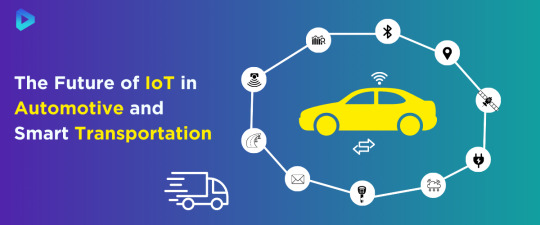
The automotive industry is undergoing a significant transformation with the integration of IoT technologies. Connected cars and smart transportation systems are becoming the norm, enhancing safety, efficiency, and convenience. In this blog, we explore how various IoT technologies and platforms are shaping the future of the automotive sector.
Role of IoT Devices in Connected Cars
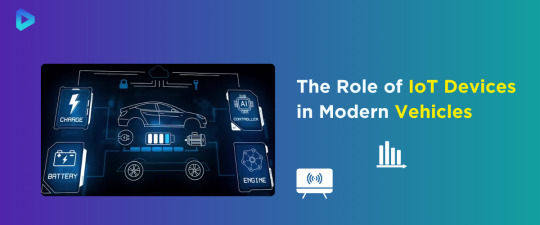
Importance of IoT Devices in Modern Automobiles
IoT devices are pivotal in modern automobiles, significantly enhancing their functionality and safety features. These devices facilitate seamless communication between vehicles and infrastructure, leading to improved traffic management and reduced accident rates. Sensors gather real-time data on how vehicles perform and how drivers behave. This information is crucial for predictive maintenance and enhancing the overall driving experience. IoT devices monitor crucial parameters like tire pressure, engine health, and fuel levels. These sensors issue prompt alerts for required maintenance.
Enhancing Vehicle Functionality with IoT Integration
Integrating IoT into vehicles drastically enhances their functionality, offering a range of advanced features. Smart cars can now include autonomous driving capabilities, real-time navigation, and personalized infotainment systems. IoT integration allows vehicles to interact with smart city infrastructure. This optimizes routes based on current traffic conditions to reduce travel time. IoT-powered navigation systems offer real-time traffic updates and recommend alternative routes to bypass congestion. IoT facilitates advanced driver-assistance systems (ADAS), including features such as adaptive cruise control, lane-keeping assistance, and automated parking.
Key Features of IoT-Enabled Automotive Systems
IoT-powered automotive systems incorporate various features that significantly boost safety and convenience for both drivers and manufacturers. These features include:
Real-Time Monitoring: Continuous monitoring of vehicle performance and health, providing timely alerts for maintenance and repairs.
Remote Diagnostics: Allowing technicians to diagnose and fix issues remotely, reducing downtime and improving efficiency.
Enhanced Connectivity: Enabling vehicles to communicate with each other and infrastructure, improving traffic management, and reducing accidents.
Advanced Security: Implementing robust security measures to protect vehicle data from unauthorized access and ensure data integrity.
Personalized Experience: Customizing infotainment systems based on driver preferences, providing a more enjoyable driving experience.
Impact of IoT Cloud on Smart Transportation
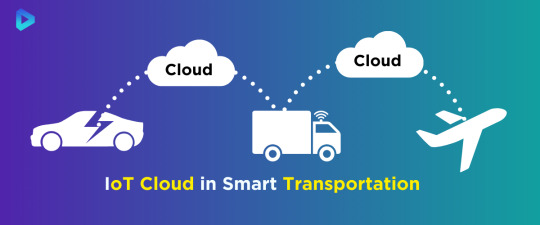
How IoT Cloud Enhances Vehicle Connectivity
The IoT Cloud significantly enhances vehicle connectivity by enabling seamless communication between vehicles and other connected devices. Vehicles can share real-time information with each other and with infrastructure systems through IoT Cloud platforms. This improves traffic flow and safety. Connected cars can communicate traffic conditions, road hazards, and optimal routes to each other. This information assists drivers in making informed choices and steering clear of traffic jams. IoT Cloud services allow for over-the-air updates. This ensures that vehicle software remains up-to-date with the latest features and security patches.
Real-Time Data Processing with IoT Cloud
Real-time data processing is a critical capability of IoT Cloud solutions. It enables vehicles to react promptly to changing conditions. The IoT Cloud processes vast amounts of data generated by sensors and devices in connected cars instantly. This immediate analysis of data allows for timely actions, such as adjusting vehicle speed to avoid collisions, optimizing fuel usage, and enhancing navigation accuracy. When a connected vehicle detects a sudden slowdown in traffic, the IoT Cloud processes this data. It then sends alerts to nearby vehicles, helping to prevent accidents. Real-time processing supports advanced driver-assistance systems (ADAS). It provides the necessary data for features like lane-keeping and adaptive cruise control.
Cost Benefits of Implementing IoT Cloud Solutions
Implementing IoT Cloud solutions offers significant cost benefits for the automotive industry. A major benefit is the decrease in infrastructure expenses. IoT Cloud services eliminate the need for extensive on-premises hardware and maintenance. Additionally, IoT Cloud solutions enable predictive maintenance, which helps identify potential vehicle issues before they become costly problems. By addressing maintenance needs proactively, companies can reduce downtime and extend the lifespan of their vehicles. IoT Cloud services allow businesses to pay only for the resources they use. This approach makes it a cost-effective solution for both small startups and large organizations.
Industrial IoT Advancements in the Automotive Sector
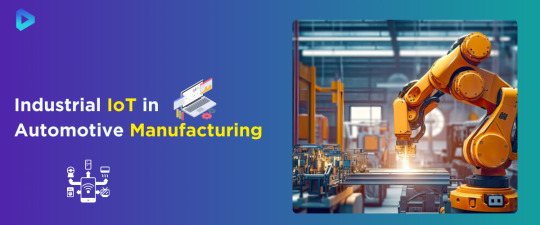
Industrial IoT Applications in Vehicle Manufacturing
Industrial IoT (IIoT) has changed vehicle manufacturing by integrating advanced sensors, data analytics, and automation technologies. These applications enable real-time monitoring and control of manufacturing processes, ensuring higher precision and quality. For example, IoT sensors can monitor equipment performance and detect anomalies, allowing for immediate adjustments to maintain optimal production conditions. Additionally, IIoT enables better inventory management through automated tracking of parts and materials, reducing waste and ensuring that production lines run smoothly. The integration of IIoT in vehicle manufacturing also facilitates seamless communication between machines and systems, improving coordination and efficiency across the production floor.
Improving Production Efficiency with Industrial IoT
Implementing Industrial IoT solutions significantly improves production efficiency in the automotive sector. By providing real-time data on production processes, IIoT helps identify bottlenecks and areas for improvement. For instance, IoT-enabled machinery can automatically adjust settings to optimize performance and minimize energy consumption. This leads to reduced downtime and increased throughput. IIoT monitors the usage of raw materials and energy, ensuring efficient resource management. The insights gained from IIoT data analytics enable manufacturers to streamline operations, reduce costs, and enhance overall productivity.
Predictive Maintenance in the Automotive Industry
Predictive maintenance is a key benefit of Industrial IoT in the automotive industry. IoT sensors monitor the condition of machinery and equipment, allowing manufacturers to predict maintenance needs, which helps prevent unexpected breakdowns and costly repairs. Vibration sensors on motors can detect early signs of wear and tear. They prompt timely maintenance before a failure occurs. This proactive approach extends the lifespan of equipment and reduces downtime, leading to significant cost savings. Additionally, predictive maintenance helps ensure consistent product quality by maintaining optimal operating conditions for machinery.
Advantages of Using Azure IoT Hub for Vehicles
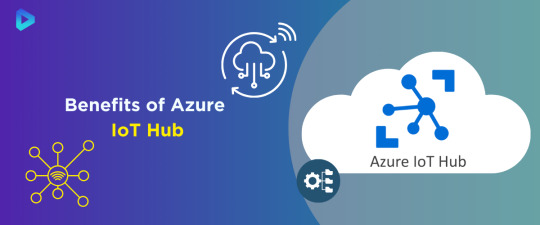
Integrating Azure IoT Hub with Automotive Systems
Integrating Azure IoT Hub with automotive systems offers numerous benefits, enabling seamless communication and data exchange between connected vehicles and cloud services. This integration facilitates real-time monitoring and control of vehicle functions, enhancing both performance and safety. Manufacturers can use Azure IoT Hub to gather and analyze data from sensors embedded in vehicles. The system provides insights into engine health, fuel efficiency, and driver behavior. The integration supports over-the-air (OTA) updates. Vehicle software remains current with the latest features and security patches.
Features of Azure IoT Hub for Smart Cars
Azure IoT Hub offers a range of features that are particularly beneficial for smart cars. These features include:
Device Management: Enables remote monitoring and control of vehicle systems, allowing manufacturers to diagnose issues and deploy updates without physical access.
Data Ingestion and Analysis: Collects and processes large volumes of data from connected vehicles, providing actionable insights for improving vehicle performance and safety.
Security: Implements robust security protocols to protect vehicle data from unauthorized access and cyber threats.
Compatibility: Supports integration with various IoT devices and platforms, ensuring seamless communication across different systems.
Scalability: Azure IoT Hub can handle a vast number of connected devices. The capability is suitable for large-scale deployments in the automotive industry.
Scalability Benefits of Azure IoT Hub
Azure IoT Hub's ability to grow is a significant advantage. It is crucial for automotive manufacturers and service providers. Azure IoT Hub can efficiently manage and process data from millions of connected vehicles. This ensures consistent performance regardless of the scale of deployment. This ability to grow allows automotive companies to expand their IoT solutions as their fleet grows. It ensures there is no compromise on performance or reliability. Additionally, Azure IoT Hub's scalable architecture supports diverse use cases, from small pilot projects to large-scale commercial deployments.
Using Thingspeak for Automotive Data Analysis

Thingspeak Applications in Vehicle Diagnostics
Thingspeak is a powerful tool for vehicle diagnostics, offering real-time data analysis and insights. By leveraging Thingspeak, automotive companies can monitor engine performance, fuel efficiency, and other critical parameters. This data helps in identifying potential issues before they become serious problems, enabling proactive maintenance. For instance, Thingspeak can track temperature variations in engine components, alerting technicians to possible overheating issues. This application of Thingspeak in vehicle diagnostics not only improves vehicle reliability but also enhances the safety and satisfaction of the driver.
Real-Time Monitoring with Thingspeak for Cars
Real-time monitoring is one of the standout features of Thingspeak for cars. Thingspeak collects and processes data from various sensors in real-time. This provides instant insights into vehicle performance and health. This capability allows for immediate response to any problems or malfunctions, reducing the risk of breakdowns. If a vehicle's tire pressure drops below a safe level, Thingspeak can instantly alert the driver. It can also suggest nearby service stations.
Data Visualization Capabilities of Thingspeak
The data visualization capabilities of Thingspeak are essential for making sense of complex automotive data. With its powerful visualization tools, Thingspeak can transform raw data into easily understandable graphs and charts. This helps automotive engineers and technicians quickly identify trends and patterns, helping better decision-making. For instance, Thingspeak can display a heat map of engine performance, highlighting areas that require attention. Teams can share these displays across departments, improving collaboration and efficiency in addressing vehicle issues.
Verizon Thingspace and Its Automotive Applications
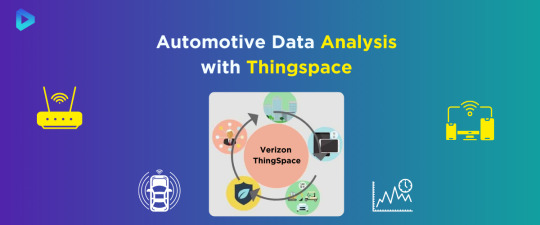
Connecting Vehicles with Verizon Thingspace
Verizon Thingspace provides robust solutions for connecting vehicles, helping seamless communication between cars, infrastructure, and cloud services. By leveraging Verizon's reliable network, automotive companies can ensure that their vehicles remain connected, regardless of location. Connectivity allows for real-time data exchange. It enables features such as remote diagnostics, over-the-air updates, and enhanced navigation services. A connected car can receive software updates and new features without needing a visit to the dealership. The vehicle always has the latest capabilities.
Features of Verizon Thingspace for Automotive Industry
Verizon Thingspace offers a variety of features tailored specifically for the automotive industry. Key features include:
Device Management: Simplifies the process of managing multiple connected devices, ensuring they are functioning correctly and securely.
Data Analytics: Provides powerful tools for analyzing vehicle data, helping manufacturers improve performance and efficiency.
Security: Advanced encryption and verification protocols protect data transmitted between vehicles and the cloud.
Scalability: Supports the growth of connected vehicle fleets, making it easy to add new devices and scale operations.
Enhancing Vehicle Connectivity with Verizon Thingspace
Verizon Thingspace significantly enhances vehicle connectivity by providing a robust and scalable platform for IoT applications. The platform enables vehicles to communicate seamlessly with each other and with external systems. It helps with traffic management, emergency response, and fleet management. Enhanced connectivity also allows for better integration with smart city infrastructure, improving overall transportation efficiency. Connected cars can share real-time traffic data with city planners. This sharing helps to reduce congestion and improve road safety.
Let's Discuss Your Idea
#IoT#IoT Devices#IoT Cloud#Industrial IoT#Azure IoT Hub#Thingspeak#Verizon Thingspace#Iot Internet#Internet Of All Things#ai#blockchain#iotsolutions#iot applications#iot development services#iot tech
1 note
·
View note
Text
The Role Of Machine Learning In Predictive Maintenance
A machinery or equipment failure can lead to increased costs, production delays, and downtimes. This further can impact productivity and efficiency as well.

Therefore, before such failures occur, it is important to foresee equipment issues and perform maintenance exactly when needed. This helps maintain productivity and leads to cost savings. By adopting predictive maintenance based on machine learning, manufacturers can reduce downtime and repair time.
Predictive maintenance with machine learning can yield substantial benefits such as minimizing the time for maintenance schedules, cutting down maintenance costs, and increasing the runtime.
In this blog post, we’ll be exploring everything a manufacturer should know about predictive maintenance with the help of machine learning models, its applications, and the future of predictive maintenance. Read More!!!
#machine learning#Predictive Maintenance#Anomalies#Asset performance#Automotive#cost savings#Data analytics#Data collection#Downtime reduction#Equipment failures#Equipment reliability#Healthcare#Historical data#IoT devices#Maintenance schedules
0 notes
Text
Transforming Cities with IoT Devices: Sustainable Urban Development

Discover AgileDock's insights on integrating IoT sensors into urban development for a greener future. Explore the role of IoT technology in creating smart cities that prioritize sustainability and efficiency. Know more.
0 notes
Text
Role of IoT Technology in Creating Smart, Sustainable Cities

Learn about the impact of IoT technology on urban landscapes through this infographic. Highlighting its applications in sustainable urban development, it discusses IoT sensors' contributions to enhancing infrastructure & optimizing transportation networks.
0 notes
Text
2024's Game-Changing Technologies for Metaverse Development
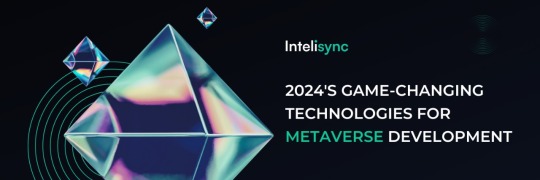
Picture a universe where virtual and physical worlds blend seamlessly, allowing you to interact with digital elements in real-time. As 2024 draws near, groundbreaking technologies are shaping this metaverse, making such interactions more immersive and dynamic than ever.
The metaverse, an expansive network of virtual environments, is evolving rapidly as we approach 2024, driven by several key technologies. Virtual Reality (VR) and Augmented Reality (AR) are at the forefront, enabling immersive experiences that blend the physical and digital worlds. VR technology has advanced significantly, offering users enhanced graphics, realistic simulations, and responsive feedback that create fully immersive digital environments.
AR enhances the physical world by overlaying digital information, enriching experiences in retail, healthcare, and entertainment through interactive and engaging environments.
Blockchain technology is essential for the metaverse, providing a secure and transparent method for managing digital assets and transactions. Non-fungible tokens (NFTs) allow users to own unique digital assets like virtual real estate and art, while smart contracts facilitate automated and secure transactions. The decentralized nature of blockchain promotes trust and reliability, making it a crucial component of the metaverse's infrastructure.
Artificial Intelligence (AI) further enhances user experiences by creating intelligent virtual agents, personalized interactions, and realistic simulations. AI-driven non-player characters (NPCs) provide engaging and adaptive experiences, and AI technologies enable natural language processing and speech recognition for seamless communication between users and virtual environments.
Edge computing and 5G technology are critical for the seamless operation of the metaverse. By bringing data processing closer to users, edge computing reduces latency and improves the responsiveness of virtual environments. 5G networks provide the high-speed internet required for real-time interactions, supporting scalable and complex virtual environments.
The Internet of Things (IoT) and spatial computing further enhance the metaverse by capturing physical movements and translating them into virtual actions, creating realistic and immersive experiences.
Elevate your business with Intelisync's cutting-edge metaverse solutions. Reach out to Intelisync today and learn how our advanced technologies in VR, AR, AI, and blockchain can revolutionize your operations, enhance customer engagement, and drive your Learn more...
#AI-driven NPCs#AR/VR for interactive product experiences#Artificial Intelligence (AI)#Augmented Reality (AR)#Blockchain#blockchain for secure transactions#Blockchain Technology#Edge Computing and 5G Technology#How Intelisync Uses this Technology for Growing Client Business#Increase in Engagement#Intelisync’s Metaverse Solution for Retail Business#Internet of Things (IoT) and Spatial Computing#IoT devices#Market Expansion#Metaverse Development#Metaverse development company#metaverse game development#Operational Efficiency#Personalization with AI#Sales Growth#Secure Transactions with Blockchain#smart contracts#social VR platforms and games.#Top 5 Technologies for Metaverse Development in 2024#Virtual Reality (VR)#Virtual Reality (VR) and Augmented Reality (AR)#Virtual Showroom#What is the Metaverse?
0 notes